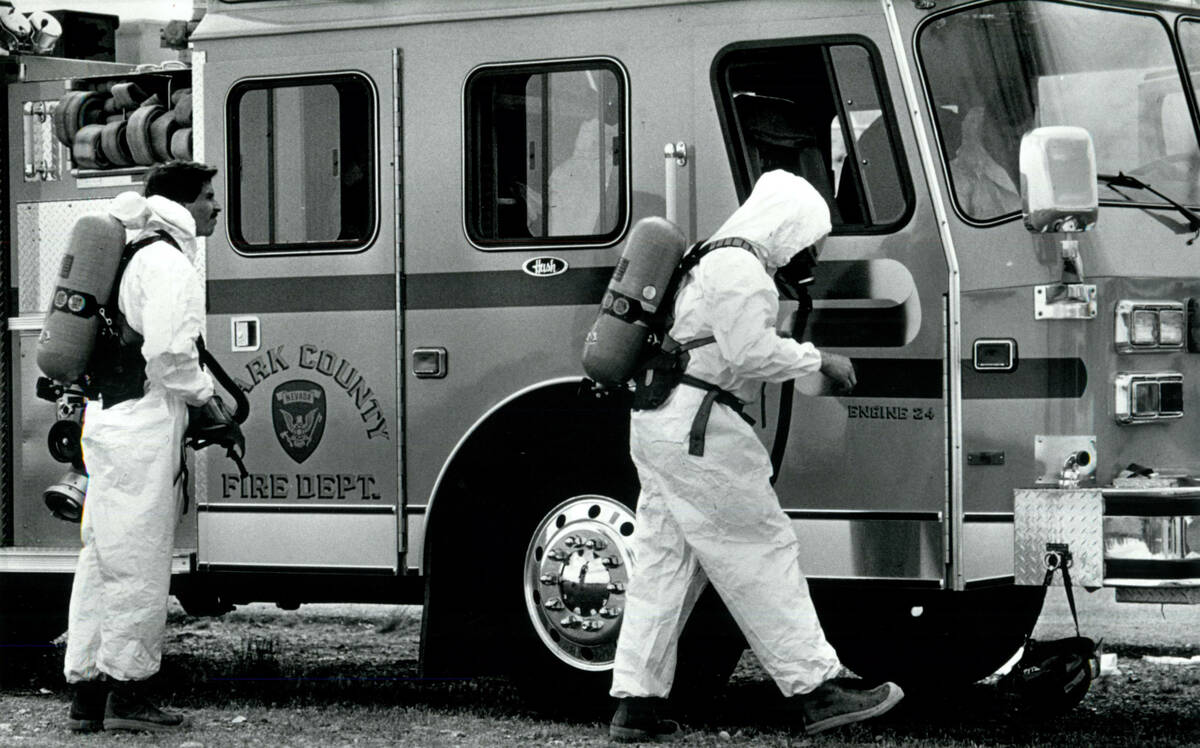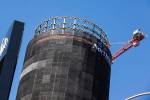A look back at Henderson’s chemical plant history
Down the street from downtown Henderson’s growing Water Street District is a row of chemical and manufacturing plants on an industrial site older than the town itself.
For eight decades, the Black Mountain Industrial Complex area, located in a county island surrounded by Henderson, has served as a hub for industrial plants in the Las Vegas Valley that have made headlines through the years.
Here’s a quick snapshot of the area’s industrial history:
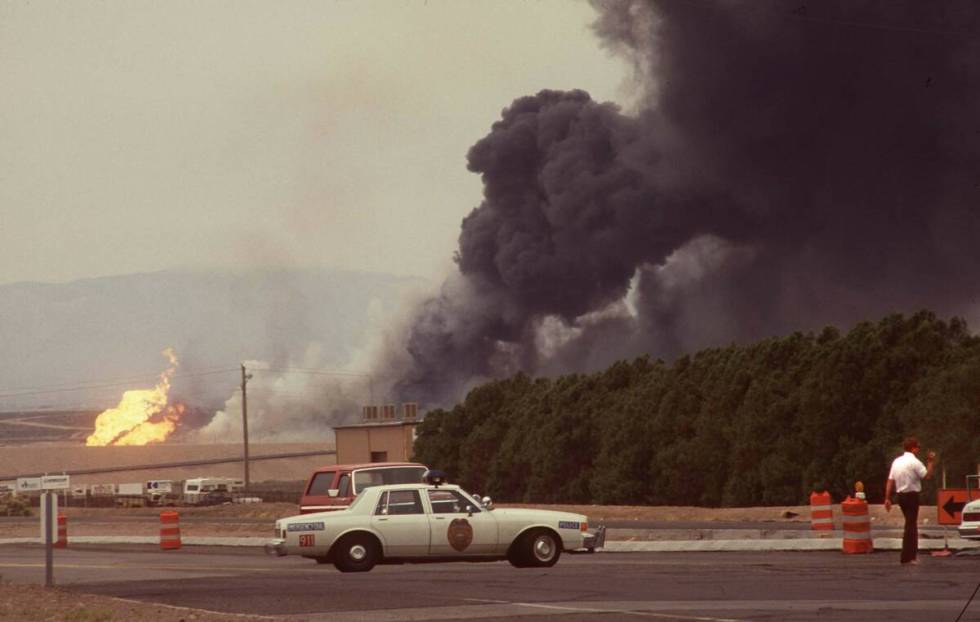
1988: PEPCON explosions
Today, the site of the old Pacific Engineering and Production Company of Nevada is a corporate park, but over 30 years ago, it was ground zero for one of the largest non-nuclear explosions in U.S. history.
The plant, located by present-day Wigwam Parkway and Gibson Road, once housed and manufactured ammonium perchlorate, an oxidizer used in rocket fuel. Henderson was one of only two cities in the country with plants for the chemical at the time, the Review-Journal reported.
On May 4, 1987, a welding torch ignited a structure at the plant, which was storing about 4,500 tons of the chemical at the time. The fire caused two large explosions that measured on the Richter scale.
Two employees were killed in the blasts, and caused about $74 million in property damage to homes and businesses nearby. The Kidd Marshmallow plant, PEPCON’s next door neighbor, was destroyed, the Review-Journal reported.
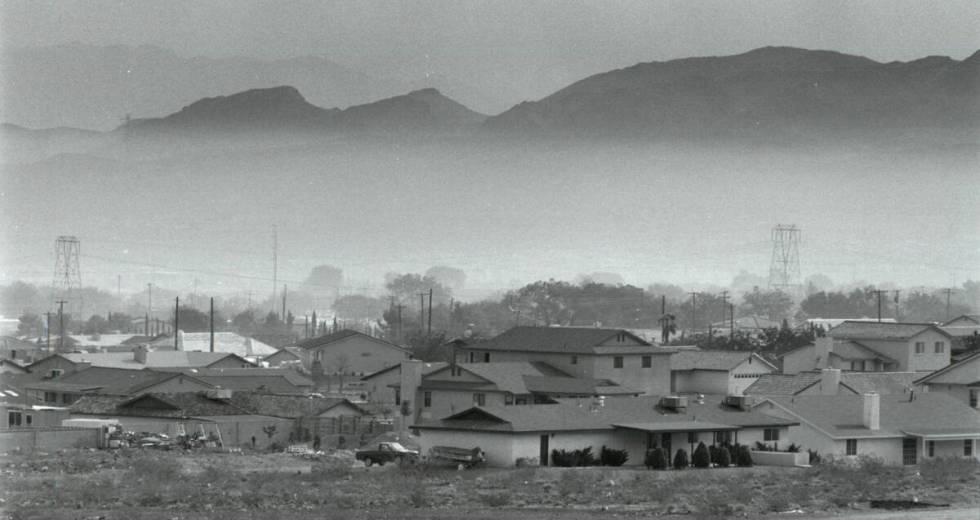
1991: Pioneer Chlor Alkali Co.’s chlorine cloud
Around 1 a.m. on May 6, 1991, employees at the Pioneer Chlor Alkali plant discovered a chlorine leak in a small pipe of a 150-ton storage tank.
Over an hour later, thousands of nearby residents fled their homes after the leak grew to cover the southeast valley in a large, green cloud, according to Review-Journal archives.
The liquid chlorine from the pipe expanded 460 times its original volume, and did not begin to leave the atmosphere until two hours after the leak was stopped — seven hours after plant workers first discovered it.
Though the leak did not cause any deaths, over 200 people were taken to six different hospitals for eye and respiratory irritations.
After the leak, Pioneer Chlor Alkali spent $3 million on plant upgrades, settlements and donations, including 5,000 claims associated with the incident.
The company also agreed to pay medical bills for those who received treatment, the Review-Journal reported after the leak.
Now Olin Chlor Alkali, the company’s Henderson plant today manufactures bleach and hydrochloric acid, among other products, according to the company’s website.
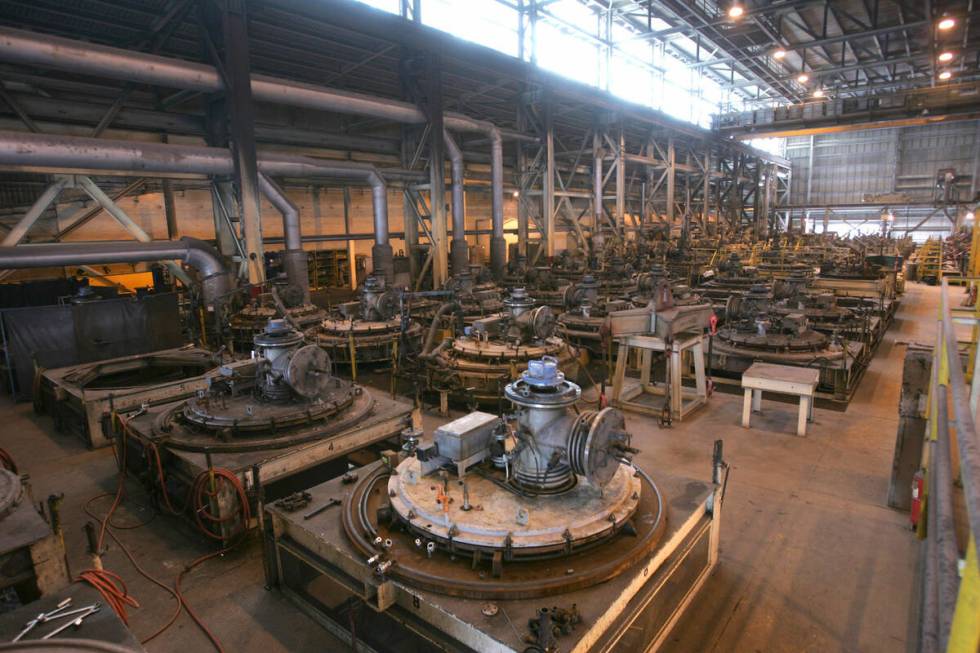
1996-2018: TIMET leaks chlorine, pays settlement for illegal dumping
Titanium Metals Corporation (TIMET) plant has been manufacturing titanium metal and magnesium chloride in the southeast valley since the late 1960s, and has butt heads with regulators since the 1990s over a host of environmental issues.
TIMET has been fined twice — in 1996 and in 2012 — for chlorine gas leaks from its Henderson-adjacent plant. In both incidents, the company failed to immediately notify authorities, and exposed residents for miles to the stinky gas, the Review-Journal reported after both incidents.
The company also paid $430,000 in 1999 to settle a federal lawsuit that accused the company of violating the Clean Air Act, the Review-Journal reported.
The United States Environmental Protection Agency, Justice Department and U.S. attorney’s office in Nevada said TIMET was emitting up to 360 tons of sulfur dioxide a year between 1992 to 1998, the Review-Journal reported. Similar to chlorine gas, sulfur dioxide can cause respiratory irritation, particularly for children and people with asthma, according to the EPA.
In 2014, the company paid federal regulators $13.8 million for producing and dumping cancer-causing PCB chemicals at its plant, and an additional $250,000 for illegally disposing of hazardous waste water.
The illegal PCB production was discovered after a series of EPA inspections in the mid-2000s. The company has been working with the agency since 2007 to meet compliance requirements and clean up waste, the Review-Journal reported.
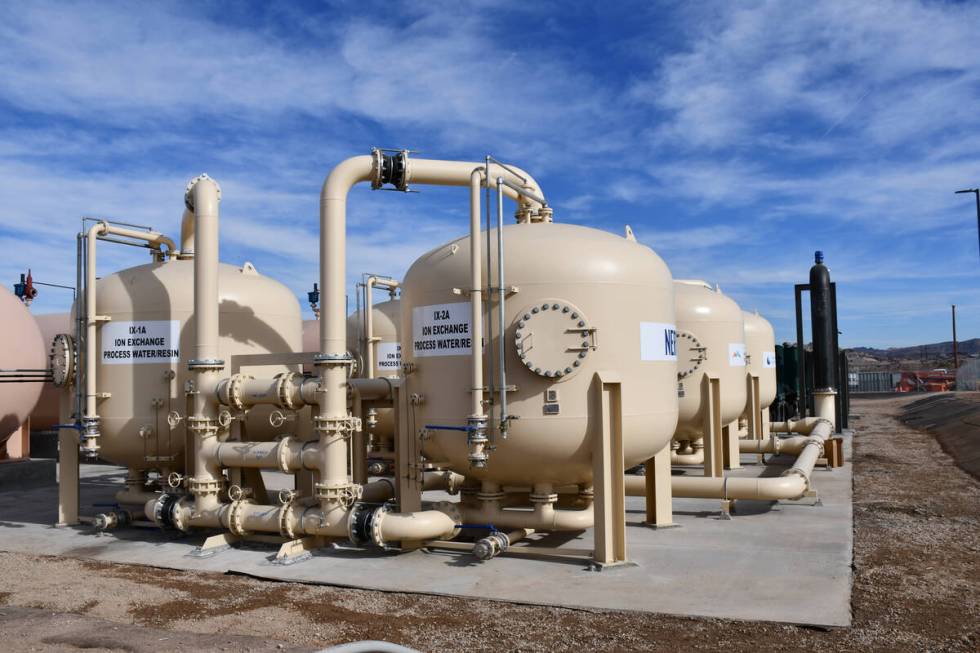
Perchlorate found in Colorado River in 1997, cleanup ongoing
Environmental protection agencies detected perchlorate in the lower Colorado River in 1997, and traced it back to the PEPCON and Kerr-McGee plants (later Tronox) who manufactured the chemical for three and five decades, respectively.
The Nevada Division of Environmental Protection said it determined that the chemical used to make explosives contaminated groundwater and surface water, which reached the Las Vegas Wash and eventually Lake Mead.
The effects of the chemical on humans is still unknown, but has been known in animal studies to decrease thyroid hormone production and impact development, according to the Centers for Disease Control and Prevention.
Since the chemical was discovered in Las Vegas’ water supply, the Nevada Environmental Response Trust, which now owns the site of the former Kerr-McGee plant, has worked to extract contaminated groundwater and investigate how chemicals from the site reached the wash. The trust site is overseen by NDEP and the EPA.
As of 2023, the trust has reduced the amount of perchlorate contamination at the site by more than 90 percent compared to year 2000 levels, NDEP said in a report last year.
Contact Taylor Lane at tlane@reviewjournal.com.



